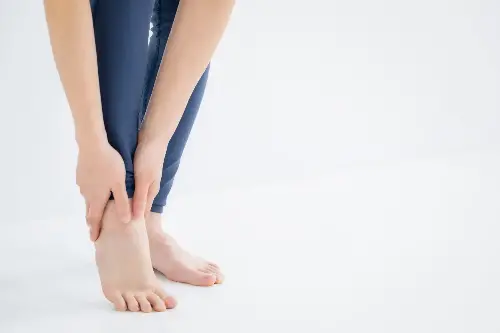Ankle mobility is a crucial, yet often overlooked, component of fitness routines that directly affects overall performance and injury risk. Not only does it facilitate better movement patterns across numerous activities, but it also serves as a foundation for balance and force transfer through the kinetic chain of the body. Incorporating ankle mobility exercises into your fitness regimen can yield significant benefits, enhancing both your training efficiency and your daily functional movements.
Understanding the importance of ankle mobility begins with recognising the role of the ankle joint—a complex system involving bones, muscles, tendons, and ligaments. When mobility is restricted, compensations occur up and down the chain, potentially leading to knee, hip, or back pain. Conversely, a full range of motion allows for deeper squat positions, more dynamic jumps, and swift directional changes, which are essential in many sports and physical tasks.
Dorsiflexion, the ability to bring the toes closer to the shin, is a primary movement enabled by the ankle. A restriction here can be detrimental to a proper squat form, leading to heels lifting off the ground or an excessive forward trunk lean. To improve this, one might perform the kneeling ankle stretch. Place one foot in front of you with your knee bent, and gently lean forward, pushing your knee over your toes while keeping the heel planted. This can be advanced by adding a weight to provide a deeper stretch.
Plantar flexion, pointing the toes away from the shin, is also essential for movements such as walking, running, and jumping. The seated calf raise exercise is ideal for nurturing this movement. Sitting with your knees at 90 degrees, place a weight over your knees and press the balls of your feet down to raise your heels. This not only improves mobility but also strengthens the muscles involved in plantar flexion.
The ankle’s ability to move the foot inward and outward—inversion and eversion—adds to its multi-directional capacity. To enhance this, try the standing inversion-eversion exercise. Standing with feet hip-width apart, simply roll the feet to stand on the outer edges (eversion), and then roll them to stand on the inner edges (inversion). This can be progressed by standing on a balance pad or soft surface to increase the challenge.
While static stretches can contribute to increased mobility, dynamic exercises are just as influential. Incorporating dynamic movements like ankle circles and alphabets helps by actively moving the joint through its range of motion. For ankle circles, lift one foot off the ground and rotate the foot clockwise, then anticlockwise. To draw the alphabets, point your big toe and spell out each letter in the air, moving your ankle through its full motion.

Strength is a supportive element of mobility, and it is crucial to include exercises that enhance the muscles around the ankle. Toe walks and heel walks target the muscles in the front and back of your lower leg, respectively. Walking back and forth on your toes and then on your heels not only improves strength but also the functional range of motion.
Balance training goes hand-in-hand with ankle strengthening and mobility. One-legged stands, potentially with eyes closed to further enhance proprioception, can be incredibly beneficial. This type of exercise not only helps improve balance but also contributes to strengthening the stabilising muscles that support the ankle joint.
Consistency and progression are vital elements in improving ankle mobility. Start with gentle exercises, gradually increasing the intensity and complexity as your mobility improves. It’s also worth noting that mobility work is not a quick fix; it's a component of a well-rounded fitness routine that requires regular attention.
It is equally important to be mindful of your body’s feedback. Some degree of discomfort is normal when stretching or mobilising a joint, but sharp pain is a signal to stop and, if persistent, to seek professional advice.
In summary, integrating ankle mobility exercises into your fitness routine is a game-changer for injury prevention and enhanced athletic performance. From basic stretches to dynamic movements and balance work, a comprehensive approach will ensure that your ankles no longer stand as the unsung heroes of your movements but rather as the robust foundation upon which your physical prowess is built. Remember, healthy ankle function aids not just in athletic endeavours but also in the ease of everyday activities. So, take the time to focus on this vital yet neglected area and witness a measurable improvement in your movement quality and an appreciation for the intricate mechanics of your body.
